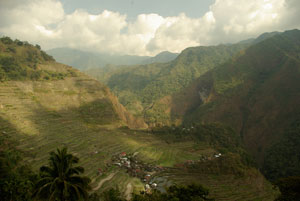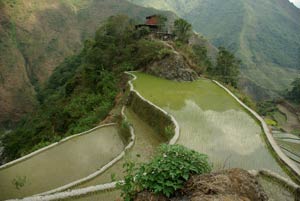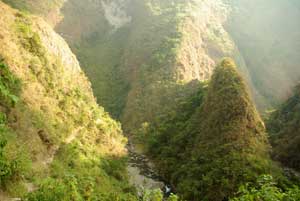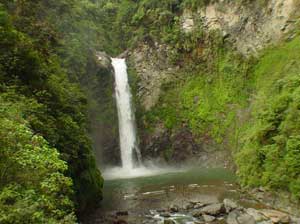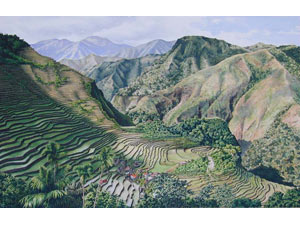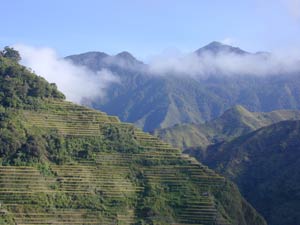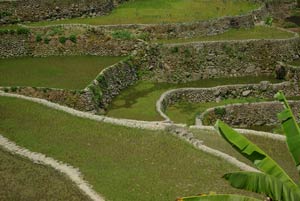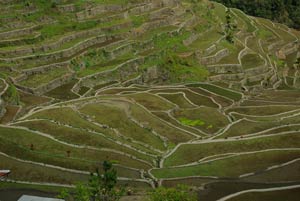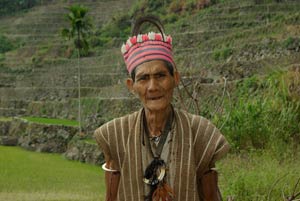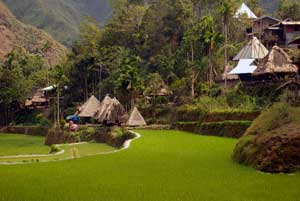
Batad Travel Guide
Updated May 29, 2010
Batad is a place to reflect, gaze, wonder at the beauty of it all and bask in the pleasure of having such a place on this earth. A tour of the mountainous region of Northern Luzon is not complete without a visit there. It’s one of my favorite places in the Philippines and I have been there many times. I often take friends and family to Batad when they visit me in the Philippines.
If you plan to stay in Batad, I recommend two nights at least. The day in between gives you time explore the village and go to waterfall. The extra night gives you time to rest up in a beautiful setting in preparation for the return walk or your onward trek. There are many beautiful treks to do from Batad, for both the casual tourist or for the mountaineers.
My first visit to Batad was in 2000 and my most recent was early 2010. Although the stunning vista is almost as it was ten years ago, tourism has had a significant impact on the culture. This once isolated farming community, forgotten by time, is steadily transforming itself into a tourism community. For many locals, the easy tourist dollars have become much more lucrative than the hard toil of farming. The old man dressed in traditional loin cloth can probably make more money from having his picture taken a few times than he could from a whole day of tending the rice terraces. A problem with this comparatively easy money, and the subsequent extra time for idleness, is probably an increase in alcoholism. Although all harmless drunks, there appears to be more of them.
Electricity came to Batad in 2005 and with it came video players, frozen meat, cold beer and cell phones (although the signal is so weak that only text messaging works).
Even though Batad has changed a lot since my very first visit, I still love this place and just don’t tire of going there. I love to stand on the verandah of the Hillside Inn at night and look out over the beautiful amphitheater lit up by the moonlight, or gaze into the nearby trees and watch the fireflies. Sunrise and sunset over the rice terraces are spectacular.
Batad is a Barangay within the municipality of Banaue, Ifugao Province, about 370km by road from Manila. It is about 18 Km travel from Banaue, of which about 15 Km is by road (to the Saddle) and about 3 Km is walked along a mountain trail.
Accommodation
Reviews of the eleven Batad accommodations can be seen by clicking here - Batad Accommodation Guide. Accommodation includes authentic native huts, budget backpacker inn type and homestay. Everything on offer is fairly Spartan, but hot water for a wash is always available, either by the bucket or out of the shower in a few places that have instant electric water heaters.
Batad and the Tappiyah Falls as a Day Trip
Also spelt Tappia Falls - If time is limited, a tour of Batad can be done as a day trip, but you must go first thing in the morning. You won’t need a guide to get to Batad. For touring the village and going to the Tappiyah Waterfall, I suggest you use a local guide rather than a Banaue guide. You don’t have to have one, but you will learn so much more about the village and the history of the place if you do. You may also get a little lost if you don’t meet anyone to help with directions. It can be an arduous walk from the waterfall back up to the saddle, so don’t do it if you are not used to a long uphill trek.
Banaue Guides versus Batad Guides
Finding your way to Batad is really a no-brainer, so you don’t need a guide, regardless of what you may have been told. If you are getting transport right up to the Saddle, then just follow the only path to the Village. Definitely take a guide if you prefer, especially if you are with a group or want someone to carry your bags – check on the surcharge or consider taking porters. Batad guides are available as you enter the village. The Batad guides are not associated with the Banaue guides.
There is some rivalry between the Banaue and Batad guides associations. A large percentage of the Banaue tour business involves taking tourists to and around Batad. The Batad people think that only Batad guides should do the local tours, otherwise they get little benefit from tourism. They feel this strongly because it is their village and they put in the work in maintaining paths for the safety of the tourists. On the other hand, Banaue guides don’t want to lose income and think that they should be able to take tourists to anywhere within the municipality of Banaue, of which Batad is one of its Barangays. Both have a point so choose your guide as you wish.
Banaue Guides
In Banaue, only take licensed guides and porters from the Banaue guides association, who call themselves the Banaue Tourism Council. These guides are easy to identify as they carry large ID’s. I have seen some lazy and useless guides, but I have been told that they are not members of the Banaue Tourism Council.
The first time I went to Batad I hired a certified Banaue guide, Derick Gano. He was sharp, funny, entertaining, a good singer, played the guitar well, and knew a lot about Batad. We all had a great time with Derik and I have recommended him ever since. I have received emails from readers who had Derik as their guide and they all thought he was a competent and fun guide.
Batad Guides
Batad has 30 registered tour guides, of whom 12 are DOT accredited. In January 2010, I hired a local guide from Batad. On this occasion I wanted to get some deep insights into the culture and history of Batad and the region. My tour guide was Romy, a trained teacher, and I really got the depth of insights that I was looking for. Being a Batad native, there seemed to be nothing that he didn’t know about Batad.
Romy told me the story about a family who sold their wooden rice guard to a collector. These treasured rice guards are handed down through generations, and some of them may date back to the original inhabitants of several thousand years ago. Shortly after the family sold its rice guard, one of their family members became seriously and incurably ill, which the community attributed to the sale of the rice guard. The family eventually tracked down the dealer to whom they sold the rice guard, and bought it back. When the item was returned to Batad, the family member miraculously recovered. As you can guess, no one in Batad will sell you their rice guard, not at any price.
Trekking, Tours and Batad Guide Rates
Village tour - P300
Walking around the village requires you to pass through many people’s yards, so you should use a guide for this.
Village and Tappiyah Falls Tour - P400
This is a half day tour and you will be walking much of the time. Although you don’t need a guide to find your way to the waterfall, it is not a bad idea to pay the extra 100 pesos onto the village tour to add the waterfall. Tourists sometimes take the wrong path to the waterfall and find themselves traversing the terraces in the dark – there are no signs to follow. The Tappiyah Waterfall (also spelt Tappia Waterfall) has a large pool, and the frigid mountain waters are great to swim in. Don’t underestimate the endurance required to make it back up to the saddle from the waterfall, and I suggest that you only do this if you are used to trekking long distances in the mountains. Many people from Manila, or those with children, who are not used to this amount of walking, find that they should have had an overnight stay in Batad and walk up to the saddle the next morning.
Best View Point - P500
A trek up a high mountain on the eastern side of the amphitheater overlooking Batad. The trek is strenuous and uphill most of the way. Allow between 2 and 3 hours to make it to the top. Set off at very first light in the morning because you will then be in the shadow of the mountain for your trek up.
Cambulo Trek - P900
Cambulo is the next village in the valley heading back to Banaue. You can go here for a day trip or you can stay overnight. There are several simple guest houses there for you to stay in overnight. The walk to Cambulo will take about 2 hours.
Batad – Cambulo – Pula – Banaue Trek - P1,800
This is a 2 day trek from Batad to Banaue. The overnight stay will be in the small village of Pula. Consider hiring a porter at P500 a day if you have a large backpack, and that way you can really enjoy a relaxing walk.
Batad to Bangaan trek - P500
This is a back-route to the village of Bangaan which located off the main road, about two kilometers or so past the Batad Junction. The direct trail from Batad is difficult to find without a guide. Alternatively, you can walk to Bangaan by following the road from the Saddle back to the Batad Junction. On reaching the junction, turns left and follow the road; you will see Bangaan village in the valley on your left and you can’t miss it. There is little value in using a guide and going on the direct trail unless there is a group of you or you want someone to carry your bags.
Mount Amuyao trek – Batad to Barlig – approx P2,500 for 3 to 4 days
This is the most popular trek for mountaineers. There are several ways to do this trek, but I suggest that you do it from Batad so that you can get a good Batad guide. Whether from Banaue or Batad, make sure you get a senior DOT accredited guide. If you are leaving from Banaue and not via Batad, I suggest you use Derick Gano (mentioned above) as your guide. If your onward journey from this trek is to Sagada or Baguio, then finish your trek at Barlig. If you are heading back to Batad or Banaue, then trek back after reaching Mount Amuyao. The round trip back to Batad should take 4 days. The one way trip, Batad to Barlig, will take 3 days.
The first night’s sleep will be at Patyay, a small village on the slope of Mount Amuyao. The second night will be spent on the summit of Mount Amuyao, which is 2700 meters above sea level. There is some very basic shelter there but you will need to bring a sleeping bag as it will get very cold up there, well below 10 degrees Celsius sometimes. You will also need to bring food. At the Mount Amuyao summit there is a ABS/CBN TV tower and a full-time guard. The guard is always happy to have some company. Note that if you are with a large group, you will need to bring tents. It is unwise to do this trek in the rainy season. It is also possible to do a return to Banaue rather than Batad, and the distance is only a little longer.
Getting from Banaue to Batad
You can hire a private jeepney to take you to the Batad Saddle and back, or a tricycle to take you the Batad Junction and back – this is best organized through the Banaue Tourism Council. You can also arrange for a porter through them if you want help to carry your luggage.
There is also a regular jeepney service that goes to the Batad Saddle. It leaves Banaue between 9 and 10 in the morning and departs from the saddle between 2 and 4 in the afternoon. The cost each way is P150. Check with the Banaue Tourism Council well before you want to go.
Passenger jeepneys also regularly pass by the Batad Junction and this may be the cheapest mode of transport – the fare is P50. This Jeepney service is for taking locals from far out villages to Banaue and returning them on the same day. For this reason, there are only morning jeepneys passing the junction to Banaue, the first being around 7am and the last being around 10am. The same jeepneys leave Banaue between 2 and 4 in the afternoon. You don’t want to catch the last one as it is dangerous to negotiate the trail in the dark, especially during the rainy season. Saturday is Banaue market day so these jeepneys will be too full with people, livestock and vegetables, so you may not get a ride as priority could be given to the local people.
The walk from the Batad Junction to the village takes a couple of hours, allowing for photo opportunities. There are shelters along the way where you can rest, gaze at the view and from where you can buy cold drinks. Avoid doing this walk in the heat of the midday sun.
© 2011 Travel-Philippines.com
